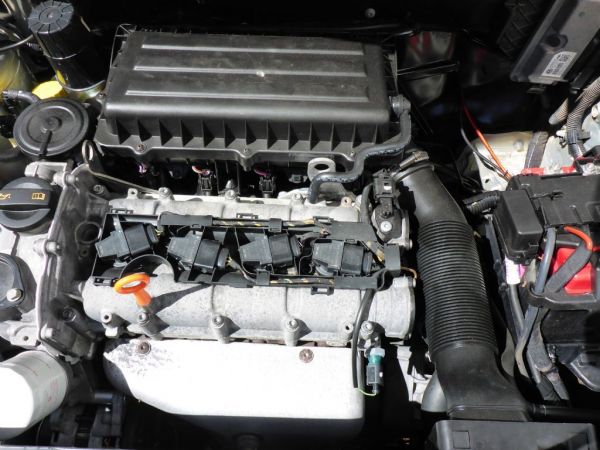Maintain peak performance with a reliable clp engine.
Maintain peak performance with a reliable clp engine.
Blog Article
How a Clp Engine Can Enhance Efficiency in Different Industries
The advent of CLP engines notes a significant change in functional efficiency throughout various markets, driven by their ability to optimize gas consumption and lessen downtime. Industries such as manufacturing and logistics stand to obtain significantly from their durable style and consistent power output, which assure to simplify procedures and improve productivity. As organizations significantly focus on sustainability together with performance, the duty of CLP engines becomes also more essential. What continues to be to be seen is just how these developments will form the future landscape of commercial procedures and their effect on wider economic trends (clp engine).
Summary of CLP Engines
CLP engines, or Continuous Fluid Propellant engines, stand for a considerable improvement in propulsion innovation, especially for space applications. These engines make use of a constant feed system that enables the sustained expulsion of propellant, bring about boosted efficiency and performance contrasted to standard solid or hybrid propulsion systems. By preserving a continuous flow of fluid propellant, CLP engines can attain more precise thrust control, which is vital for maneuvering spacecraft in various goal circumstances.
The layout of CLP engines incorporates advanced materials and ingenious gas management systems. clp engine. This results in lowered weight and enhanced reliability, crucial factors for long-duration space objectives. In addition, the constant procedure minimizes the risk of burning instability, an usual challenge in traditional rocket engines.

Benefits in Manufacturing
The production of Continual Liquid Propellant (CLP) engines presents numerous noteworthy advantages that improve both effectiveness and cost-effectiveness. One of the primary benefits is the structured manufacturing procedure, which decreases the complexity connected with typical propulsion systems. By using liquid propellant, suppliers can achieve higher accuracy in engine efficiency, leading to maximized power output and lowered waste.
In addition, CLP engines help with a greater degree of modularity, permitting simpler combination right into various manufacturing lines. This adaptability can substantially decrease lead times and boost overall functional flexibility. Using CLP modern technology likewise has a tendency to lessen the demand for considerable maintenance due to less moving parts, which equates into minimized downtime and functional expenses.

Applications in Logistics
Leveraging Continuous Fluid Propellant (CLP) engines in logistics offers substantial benefits in functional efficiency and integrity. These engines supply a robust option for various transportation requirements, making it possible for the smooth movement of goods across huge distances. The integral layout of CLP engines permits for consistent power output, which equates into smoother and a lot more predictable transportation schedules.
Among the crucial applications of CLP engines in logistics remains in sturdy products transportation, where they can drive both ground and aerial lorries. Their capacity to maintain high performance under differing lots problems guarantees that shipment timelines are satisfied, therefore enhancing consumer contentment. In addition, CLP engines can be integrated into automated logistics systems, website link helping with real-time monitoring and maximizing path preparation.
Moreover, the toughness of CLP engines minimizes upkeep downtime, enabling logistics companies to optimize their operational capacities. This is specifically helpful in warehousing procedures, where performance in dealing with and carrying items is essential. As logistics remains to evolve, the integration of CLP engines represents a forward-thinking strategy that not just enhances performance but likewise supports the industry's expanding demands for dependability and rate.
Influence On Power Effectiveness
How do Continuous Liquid Propellant (CLP) engines boost energy effectiveness in transportation? CLP engines make use of a constant circulation of fluid fuel, optimizing burning procedures and preserving a steady thrust outcome. important source This style decreases energy losses connected with conventional combustion engines, where fuel shipment can vary and cause inefficiencies.
The continuous procedure of CLP engines permits for an extra reliable thermal cycle, leading to greater details impulse compared to standard engines. clp engine. This converts to lowered gas consumption for the exact same quantity of job done, dramatically lowering operational prices across numerous transportation markets, consisting of aeronautics and maritime industries
Additionally, the capacity of CLP engines to keep optimal performance under varying lots problems decreases the need for frequent acceleration and slowdown, even more boosting fuel performance. Improved energy performance not just contributes to set you back savings yet likewise leads to decrease greenhouse gas discharges, aligning with global sustainability goals.
Future Trends and Innovations
Emerging innovations in Continual Fluid Propellant (CLP) engine modern technology assurance to change the landscape of transport effectiveness and sustainability. As markets pivot toward greener choices, CLP engines stand at the forefront, integrating cutting-edge products and design techniques that enhance efficiency while minimizing ecological effect.
One of one of the most appealing fads is the adoption of hybrid systems that incorporate CLP engines with renewable resource sources. This synergy can enhance gas intake and decrease exhausts, lining up with worldwide sustainability objectives. In addition, advancements in computational fluid dynamics (CFD) are promoting the design of more aerodynamically reliable engines, causing decreased drag and enhanced fuel performance.
Additionally, the development of clever monitoring systems is readied to enhance functional efficiencies. These systems utilize data analytics and IoT technology to enhance engine efficiency in real-time, guaranteeing that the engines run within their most reliable criteria.
As research continues to check out alternative propellant solutions-- such as biofuels and synthetic fuels-- the future of CLP engines looks appealing. By using these technologies, markets can not just improve their effectiveness yet additionally add dramatically to a cleaner, a lot more lasting future in transport.
Verdict
To conclude, CLP engines represent a considerable advancement in effectiveness across multiple markets. Their capability to maximize fuel intake and reduce functional prices, integrated with a constant feed system, enhances power outcome and operational integrity. The assimilation of advanced products and less relocating parts decreases upkeep requirements, while placement with sustainability goals settings read review CLP engines as an essential technology for the future. Proceeded innovation in this field promises additional enhancements in effectiveness and environmental performance.
Report this page